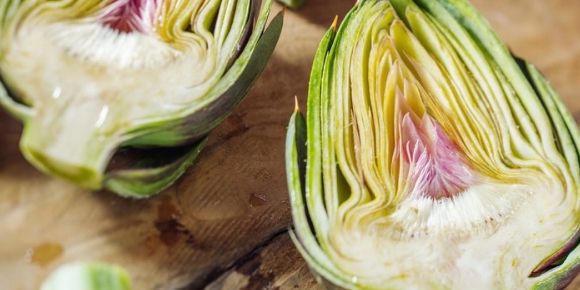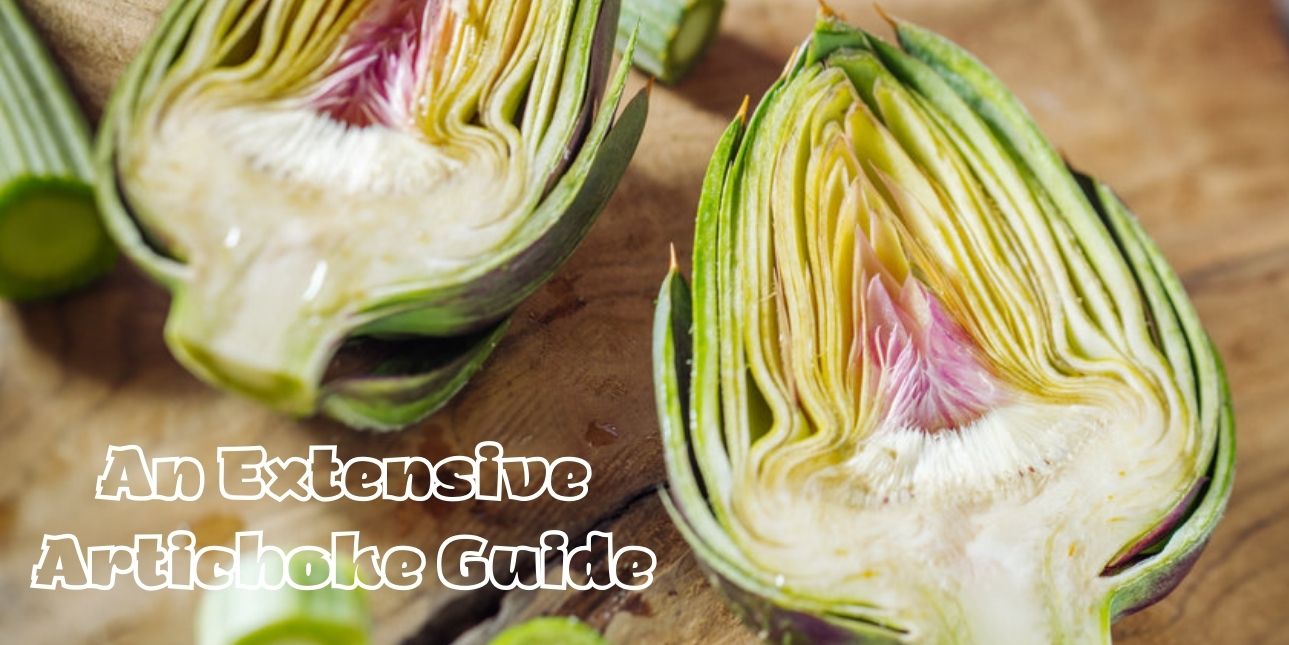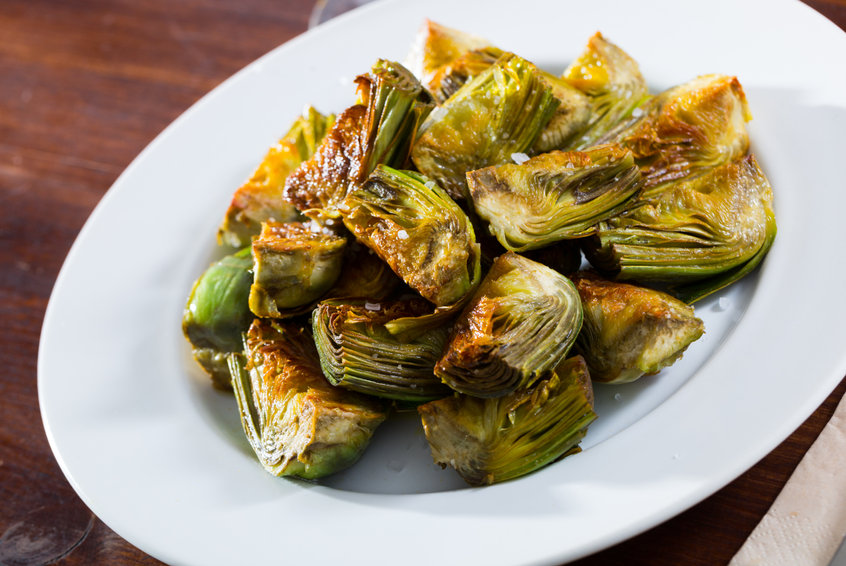

Artichokes, though grouped under the vegetable category, are in fact flower buds that look like pine cones at first glance. If you’re thinking - ‘where do artichokes come from’, the answer is - from the Mediterranean. Artichokes are especially common in these regions, where they’re available extensively during the spring and summer. But how do artichokes grow? And what do artichokes taste like? While these succulent flower buds grow on short to mid-sized shrubs, they’re well known for their earthy flavor. When uncooked, the bud retains a bit of its natural bitterness, however, when cooked, the texture becomes softer, and the taste is blander.
Since these juicy gifts of nature are just gaining popularity across the world, it’s important to understand how to clean and cook artichokes effectively. They provide a great, healthy, and delicious alternative when it comes to snacks, and maybe it’s time you included artichoke dishes in your establishment’s menu.
What Are Artichokes, And What Do Artichokes Taste Like?
Artichokes are a species of thistle that are commonly grown as a source of food in Spain, Italy, Egypt, Morocco, and Algeria. Recently, their cultivation has also picked up in the Americas, and the vegetable is finding its way into more dishes than ever before. The flower buds are the edible portion of the plant, however, they’re edible only when harvested before the bud blooms. The outer part of the artichoke is covered in rigid leaves that are called bracts. The inner portion of the artichoke, also called the choke, is fuzzy and sits above the ‘core’ or the ‘heart’ of the artichoke. While the choke is fibrous and tough, the heart of the artichoke is tender and is delicious. The choke is often not edible in older artichokes, however, it is softer and more palatable in the smaller, younger artichokes.
What do artichokes taste like, and what’s their precise taste profile? Artichokes are well-known for their herb-like earthy flavor. These vegetables also come with a mild nutty taste profile when eaten raw. While raw artichokes are firm and crunchy in texture, boiled and cooked artichokes are soft and asparagus-like. The outer bracts are milder, whereas the inner heart is more intense in flavor, which is complemented by the tenderness of the bud. Overall, artichokes provide a mild taste to the foods they’re added to and are great complements to salads when not eaten as standalone dishes.
How To Clean Artichokes?
It’s important to know how to clean artichokes before you go about cooking artichokes. Here’s how you can clean artichokes you bought at the market:
- Rinse the artichokes well under a stream of cold water. You can let them drip for a while before you pat the artichokes dry with a paper towel.
- Remove any stray leaves that are still attached to the stem of the artichoke.
- Take a pair of kitchen scissors to cut off the thorns and tips of the bracts.
- Ensure that all the thorns and the tips of the leaves are removed from all bracts across the artichoke.
- Measure about three-fourths to one inch from the tip of the artichoke, and slice off the portion to reveal the inner choke and heart.
- You can use a lemon to prevent the oxidation of the exposed portion by rubbing it over the remaining portion of the artichoke.
- Oxidation causes the artichoke to go brown and makes it look unappealing.
- Proceed to slice off the stem from the artichoke. The stem contains pigments that taste bitter. Don’t forget to rub lemon even on the exposed part of the stem.
- Tug on the bracts lightly, and expose the inner portion so that you can clean the bud better.
- Run the artichoke under water again and ensure the water removes all the impurities from between the bracts.
- Storing artichokes requires some amount of cooking since storing uncooked artichokes can lead to texture and flavor loss over time. We look at cooking artichokes in the upcoming section.
Cooking Artichokes
Several methods can be used when you’re cooking artichokes. Here are some of them:
- Boiling
- Boiling is the simplest method of cooking artichokes.
- Make sure all your artichokes are cleaned well before you cook them.
- Take a large pot that’s capable of holding all the artichokes at once.
- Fill up the pot with enough water to submerge all the artichokes.
- Bring the water to a boil and simmer the flame before you add the artichokes to the pot.
- Let the water remain on low heat for up to half an hour to allow the artichokes to be cooked completely.
- The bracts must separate from the bud easily - this is the main indicator when the artichoke globes are done cooking.
- You can then serve the artichoke with a dip or sauce of your choice. Scrape the fleshy portion from the bracts and discard the remnants.
- Once you strip the globe of all its bracts, scoop out the fuzzy choke using a spoon and eat the fleshy heart of the artichoke along with the sauce or dip.
- Steaming
- This is a gentler method of cooking artichokes and retains its subtler flavors.
- Take a large pot of water and place a steaming vessel within it to place your artichokes.
- You may also add spices like a bay leaf to the water to add extra flavor to the artichoke. Adding lemon and garlic also enhances the end product.
- Once you place the artichokes in the steaming basket, bring the water to a boil. Simmer the flame once the water boils, and let the artichokes steam for up to 40 minutes.
- You can also steam artichokes in a pressure cooker. They don’t take as long to cook and are often done within 10-15 minutes.
- Frying
- This method is another simple method of cooking artichokes.
- Though you might have to discard the outer, tougher bracts of the bud, frying is still a great way to prepare delicious artichokes, since you’re left with the flavorful tender parts of the globe.
- Before you fry the artichokes, remove the outer tough bracts.
- Slice the artichoke in half once you’re left with the soft, pale petals.
- Scoop out the choke and the heart, and set them aside.
- Slice away the stem and set the artichokes aside.
- Take a pan or a cast-iron skillet and add three to four tablespoons of olive oil to it.
- Heat the pan and add the sliced artichokes to the pan with the cut side facing down. Cook for about four to five minutes.
- Once you notice a uniform brown color on the cut side, flip the artichoke and cook on the other side for the same period.
- Serve the fried artichokes with the sauce or dip of your liking.
How To Store Artichokes
Artichokes don’t store that well once they’ve been cleaned, so if you’re wondering ‘how long do artichokes last in the fridge?’, you’re left with few options. Here’s what you can do:
- Storing artichokes without cleaning is one of the easiest options when it comes to storing these delicious vegetables.
- You can sprinkle some water on them before putting them in a ziplock bag for the refrigerator.
- Artichokes stored this way often last between five and seven days in the refrigerator.
- If you’re looking to freeze artichokes, this method is more effective than the former and allows you to put them away for longer.
- Freezing artichokes requires you to blanch artichokes before you freeze them.
- Throw the artichokes in a pot of boiling water for about a minute. Transfer the artichokes immediately to an ice bath.
- Sprinkle the blanched artichokes with some lemon juice and add them to an airtight container. Freeze the artichokes following this procedure.
- Frozen artichokes will last about eight to ten months in the freezer.
- Ensure you use quality walk-in freezers such as Kolpak walk-in units when freezing a large batch of blanched artichokes.
Artichokes, though recent inclusions to the American diet, have become quite popular. Including them in your menu can be a great way to engage your customers’ hunger pangs with a dose of fresh and healthy ingredients. Make sure you follow all the instructions before cooking artichokes so you retain every bit of freshness in these floral delicacies!










